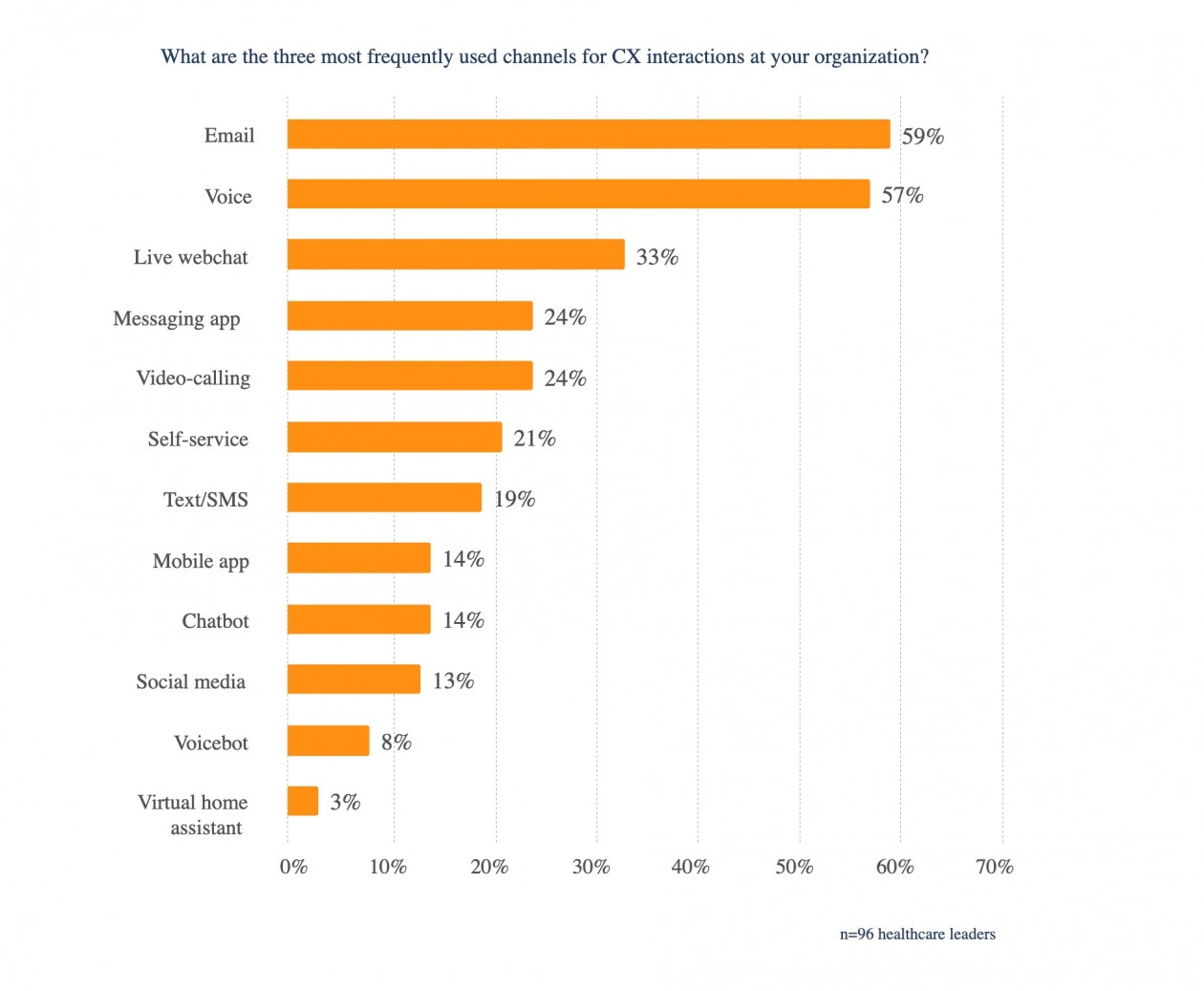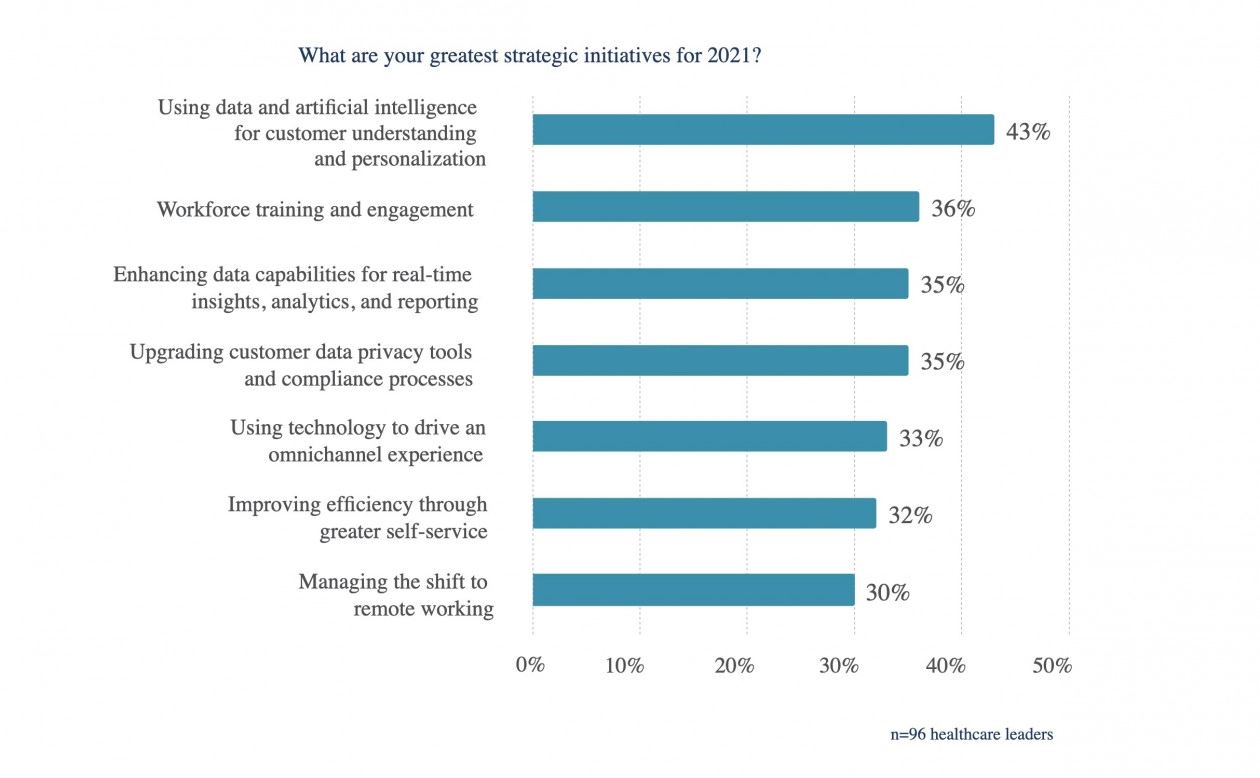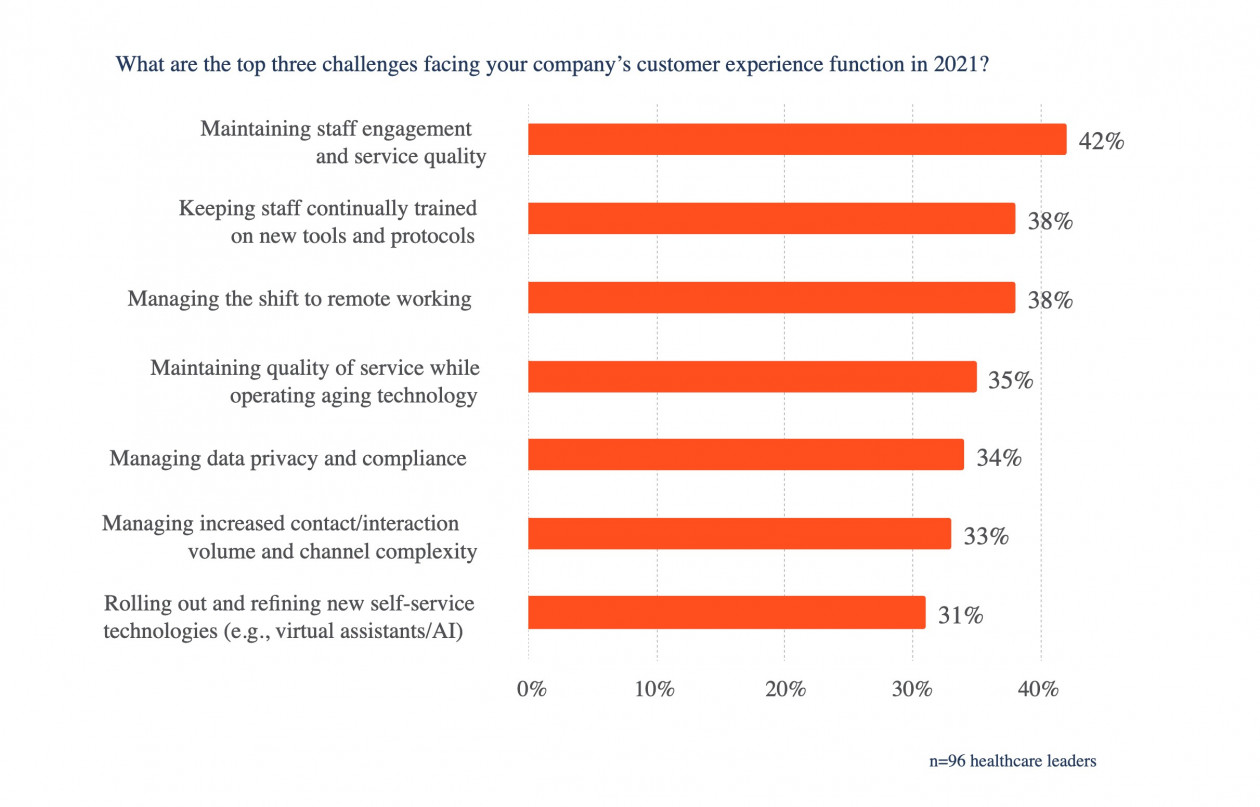Your Genesys Blog Subscription has been confirmed!
Please add genesys@email.genesys.com to your safe sender list to ensure you receive the weekly blog notifications.
Subscribe to our free newsletter and get blog updates in your inbox
Don't Show This Again.

Healthcare providers are placing more emphasis on care than ever before. They’re shifting to a new paradigm for service interactions that not only aims to provide care and customer support, but also deliver a great customer experience (CX).
Healthcare companies are adding ways to improve the patient experience — and business outcomes. This includes digitally onboarding new patients and providing alternative healthcare delivery methods like telemedicine. They’re also enabling self-care options.
Three major trends have contributed to this shift.
Digital interactions are reshaping patient and provider interactions. Technologies like artificial intelligence (AI), data and the cloud are allowing healthcare companies to provide more personalized and empathetic patient experiences. And CX workforce management challenges are driving the need for new approaches to engaging customer-facing healthcare service staff.
Findings from “The state of customer experience” report by Genesys, provide insight into key trends in customer satisfaction. The report includes insights from 2,629 consumers and 690 CX executives across industries globally.
The healthcare industry has been managing high volumes of patient interactions over the past few years, according to the survey. Voice remains the leading customer interaction channel, with email a close second.
But patients have increased their use of web chat, video calling and messaging. Video calling is more prevalent in healthcare than in other industries. And patients use chatbots less frequently than other consumers.
One-third of healthcare leaders surveyed said managing this increased interaction volume and channel complexity is a leading challenge for providing a good customer experience.

Despite this, respondents are confident their voice and email channels are meeting patient expectations. And 60% considered video calling as highly effective in providing a positive customer experience.
Just one-third consider chatbots to be “highly effective” in meeting patient expectations. Additionally, less than one-third of healthcare executives said their company is significantly reducing customer effort.
The Fix: Focus on the Customer Journey
Consumers are comfortable using a wide array of digital service channels. More mature channels like email and voice still top the list for frequency of use. But digital channels have gained traction — and permanent adoption.
Healthcare providers must ensure those communication channels meet customer expectations so they can benefit from resulting efficiencies like increased self-service and fewer voice interactions.
One notable way to enhance the CX is to use AI-based conversational bots to gather intent and streamline processes. This can include leveraging the patient’s profile to prefill forms and show there’s a level of understanding and relevance as the bot enters a conversation.
It could also include having the bot transfer data to the contact center if an interaction requires escalation. This gives the agent context of the patient’s digital interaction.
AI technology and data platforms are facilitating a shift in care. And that’s empowering patients to take charge of their own health. Self-service portals give patients access to personalized resources, while chatbots automate service processes.
Healthcare providers recognize the potential for AI and data to generate significant ROI. The main strategic CX priority for healthcare companies in 2021 was using data and AI for customer understanding and personalization.
Breaking down silos and gaining visibility into data will improve health outcomes, decrease costs and increase profits.

A leading trend for healthcare companies is to shift the customer experience strategy to the cloud.
Nearly two-thirds (65%) of CX leaders at healthcare companies cite better access to data across channels as the leading capability they’ve developed since moving to the cloud. Over half (54%) cite enhanced reporting and analytics. And 47% report increased security/disaster recovery/business continuity as other benefits of the cloud.
The survey shows that the healthcare industry’s focus on data and AI is needed because personalization is lagging. Just one-third of healthcare respondents said their organization delivers a highly personalized customer experience, compared to 44% of other companies.
The Fix: Use Technology to Listen and Understand
The best way for any organization to provide empathetic experiences is to know their customers’ expectations, needs and preferences. This requires improving listening channels for implicit Voice of the Customer. That could include using digital engagement to understand intent, real-time sentiment analysis to adjust in the moment. It could also mean using AI across digital channels to gather insights.
Additionally, healthcare companies can use AI to improve service via voice channels by using natural language processing, speech to text, and sentiment analysis. Organizations that provide more personalized experiences using these technologies will see notable benefits.
Eighty percent of consumers polled for “The state of customer experience” report say they’ll recommend brands that consistently personalize their interactions more often than others.
Healthcare providers are expected to provide accurate medical information with speed, security and empathy. And agent-assisted service interactions play a critical role in creating positive patient experiences when attempting to meet these expectations.
But staffing has been a huge issue for healthcare organizations the past few years. An uptick in interaction volume and added stress have resulted in higher-than-average turnover.
At the same time, nearly two-thirds (61%) of healthcare respondents reported the number of seats in their contact centers has increased in 2021. And 71% expect this growth to continue.
Complementing that growth is a focus on employees for some healthcare companies. Workforce training and engagement is a top-three priority — but only for one-third of organizations.

The Fix: Empower Your Representatives
As healthcare organizations look to build out features and capabilities to improve the employee and patient experiences, 66% cited quality management and workforce optimization tools as being highly valuable.
Respondents say tools that empower employees to provide great CX are most valuable. These include agent-assistance solutions that provide knowledge, coaching and real-time prompts with next-best actions.
Quality management and workforce optimization (WFO) tools can help identify training needs. And they give staff deeper insights into their performances. Plus, they help managers improve processes that create a better agent experience.
Adopting practices that focus on experiences isn’t just good for patients and agents. Companies following these trends also benefit. They gain a healthy dose of customer loyalty and employee engagement.
A version of this article was originally posted on Customer Experience Magazine.
Subscribe to our free newsletter and get blog updates in your inbox.